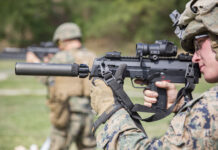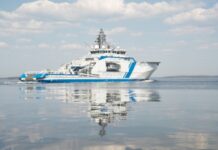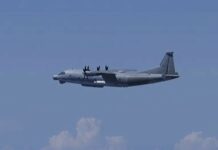Dominated by fighter types produced by Western manufacturers, the air forces of the Gulf region remain a viable market for future fighter sales.
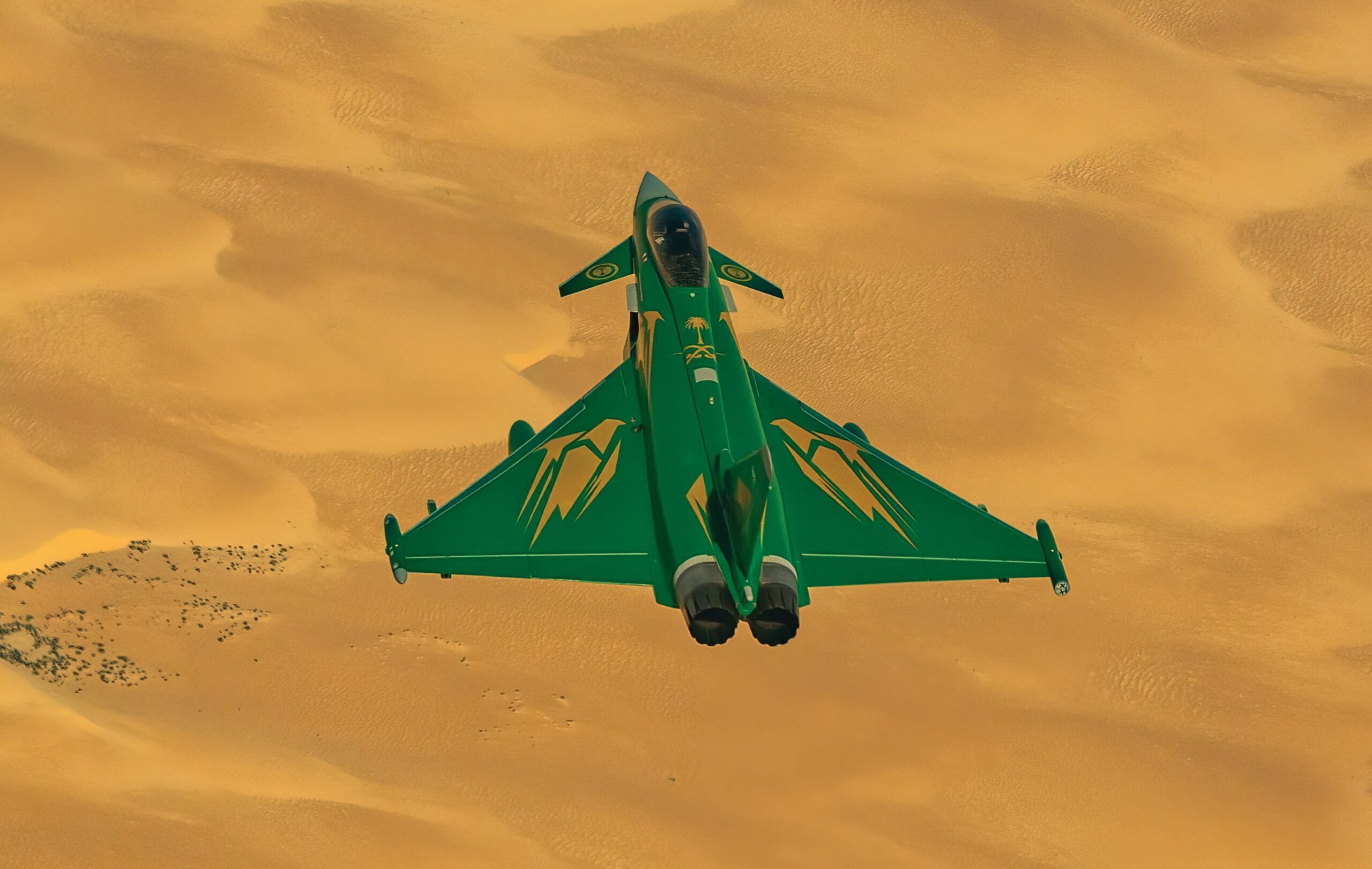
Credit: BAE Systems
While some Gulf states – effectively Saudi Arabia and the United Arab Emirates – have made significant moves in recent years to indigenise defence production, in the aerospace sector these efforts have largely focused on the development of home-grown unmanned aerial vehicles and air-launched weapons.
The region thus remains a potentially lucrative market for the world’s fighter manufacturers, although in reality the United States, the Eurofighter nations and France account for virtually all Gulf fighter acquisitions.
Moreover, international military operations against the Islamic State since 2014 and the initiation of a Saudi-led military coalition against the Yemen-based Houthi militia in 2015 have seen most Gulf state air forces engaging in combat missions over the last decade. This and the current instability in the region – caused by the October 2023 Hamas terrorist attack on Israel, the Israel Defense Forces’ (IDF) consequent campaign in Gaza and the Houthis’ subsequent campaign against international shipping around the Red Sea and Gulf of Aden – have given added motivation for the Gulf states to maintain the strength of their air forces.
Saudi Arabia
The Royal Saudi Air Force (RSAF) operates a fast jet combat fleet consisting of 80 Panavia Tornado IDS strike aircraft delivered from 1986 (and upgraded to UK GR4 standard), around 232 Boeing F-15C/D/S/SA multirole fighters delivered from 1982, and 71 Eurofighter Tranche 2 Typhoon multi-role fighters from 72 delivered from 2009. Deliveries of the RSAF’s 84 new F-15SA aircraft were completed in 2020, according to Boeing.
The Kingdom of Saudi Arabia (KSA) formerly had a requirement for at least 48 – and possibly as many as 96 – new Typhoons to replace its Tornados and in March 2018 signed a memorandum of intent to purchase an additional 48 such aircraft. However, following the murder of Saudi journalist Jamal Khashoggi at the Saudi consulate in Istanbul on 2 October 2018, and due to human rights concerns, Germany placed a veto on further Eurofighter sales to the Kingdom. This led Saudi Arabia to court Dassault with regard to a potential procurement of Rafale fighters.
However, in light of the Hamas attack on Israel on 7 October 2023 Germany moved to lift its embargo on further Typhoon sales to the KSA. German Foreign Minister Annalena Baerbock stated during a visit to Israel on 7 January 2024, “The world, especially here in the Middle East, has become a completely different place since October 7,” adding, “We do not see the German government opposing British considerations for more Eurofighters for Saudi Arabia.”
The prospect of an additional Typhoon sales to the KSA is thus back on, but, that said, there are a number of potential hurdles to such a sale. The RSAF is known for wanting to operate Eurofighters that match the standards of the Typhoons in Royal Air Force (RAF) service. In addition to this, the RSAF is reportedly keen for any future Typhoons it acquires to be equipped with both the European Common Radar System (ECRS) Mk 2 active electronically scanned-array (AESA) radar and a large area display (LAD) in the cockpit. While the RAF has, indeed, committed to the ECRS Mk 2 for its Typhoon fleet, as yet there is no RAF commitment to a LAD.
The ECRS Mk 2 is a significant advancement compared to the previous Mk 0 and Mk 1 ECRS variants in that it features a wide-band array that will not only detect its own emissions and find other targets in that way, but will also passively detect emissions through a far broader range of the frequency spectrum and thus possess an electronic attack capability.
With any future Typhoon contract the RSAF will nevertheless want to be confident that no future veto from a Eurofighter partner nation will affect the support of any future aircraft it acquires.

Credit: BAE Systems
Meanwhile, news emerged out of the 2024 World Defense Show (WDS 2024), held in Riyadh from 4-8 February, that in a project it is calling the ‘Future Fighter’ programme, Saudi Arabia is looking for 54 new fighters. The increase in number from 48 is derived from the believe that, whatever new fighter is procured, it will be different enough from anything in the current RSAF inventory that additional conversion trainers will be required.
Suggestions also emerged out of WDS 2024 that the RSAF might be inclined to opt for Typhoons with ECRS Mk 0 radars since, although these do not have the functionality of the ECRS Mk 2, Typhoons equipped with them could be obtained much sooner (production of Qatari ECRS Mk 0-equipped Typhoons is due to be completed in August this year).
The latest BAE statement on the Saudi requirement reads, “We are supporting the UK government to respond to the Statement of Requirements issued by the Saudi Arabian government for a future requirement of Typhoon aircraft,” suggesting that a Typhoon campaign for Saudi Arabia is, indeed, active.
Beyond current-generation fighters, Saudi Arabia is very keen to be involved in the UK/Italian/Japanese Global Combat Air Programme (GCAP) and its Tempest sixth-generation fighter – so much so that on 1 March 2023 the Saudi defence minister declared that his country had actually joined the programme, only for the UK Ministry of Defence (MoD) to walk back that statement.
There does seem to be support from within the UK MoD for the Saudis to join GCAP ‘in due course’, although Japan appears less willing to accept another partner in the programme. It is possible that the UK might somehow allow the Saudis to participate in the wider, UK-led Future Combat Air System (FCAS) programme, which remains as a wider project that goes beyond the specific GCAP focus on the Tempest fighter.
United Arab Emirates
The UAE Air Force and Air Defence (UAE AF&AD) employs 4,500 personnel and currently operates more than 200 aircraft, with its combat air element consisting of 56 Block 60 F-16Es and 22 F-16Fs (three squadrons) and 59 Mirage 2000-9s (three squadrons). The F-16E/Fs feature the Northrop Grumman AN/APG-80 AESA radar, which gives them the capability to simultaneously track and destroy air and ground threats.
However, in December 2021 it was announced that the UAE had ordered 80 Dassault Rafales – the French manufacturer’s largest ever export order for the type – in the aircraft’s latest F4 configuration, which are to be delivered between 2026 and 2031. These will be the first Rafale F4s to be operated outside France.

Credit: USAF
The most significant feature of the F4-standard Rafale over its predecessors is the aircraft’s adoption of the RBE2 AESA radar, which brings improved capabilities in the air-to-ground mode, but the F4 standard also brings several other enhancements, including: improved connectivity through new satellite and intra-flight links, communications servers, and software-defined radios; improvements to the navigation and weapon systems; a new infra-red search and track (IRST) sensor; introduction of the SPECTRA integrated electronic warfare suite and Talios targeting pod; and installation of a next-generation Scorpion helmet sight. New weapon integrations for the aircraft include the MICA NG air-to-air missile and the Armement Air-Sol Modulaire (AASM) air-to-ground modular weapon.
The UAE had previously been interested in acquiring 50 fifth-generation Lockheed Martin F-35A Lightning II fighters, having effectively been promised the opportunity to buy them by the previous US Trump administration in return for normalising relations with Israel. However, in January 2021 the US Biden administration announced it was reviewing the sale of F-35s to the UAE. Although the Biden administration subsequently announced in April 2021 that such a sale could proceed, in December 2021 the Emiratis declared they were withdrawing from any F-35 purchase, having not agreed to additional US terms in relation to the sale, and instead signed the Rafale order with Dassault.
As previously mentioned, the indigenisation of UAE air-launched weapon capabilities means Emirati weapons made by EDGE Group subsidiaries are increasingly being integrated onto the UAE AF&AD’s fast jet fleet. These include MK81, MK82, Mk83 and Mk84 aerial bombs made by Lahab; the Al Tariq family of precision-guided munition kits; the Halcon Desert Sting range of guided glide weapons; the Halcon NASEF-S120 low-cost cruise missile; and the Halcon Thunder range of short-range guided bomb kits.
Qatar
Operational since 1974, the Qatar Emiri Air Force (QEAF) continues to build a substantial combat aircraft fleet and the infrastructure to go with it. When its currently ongoing procurement is complete, the QEAF will be operating five different combat aircraft types.
Nine years ago the QEAF’s existing fast jet fleet consisted of nine single-seat Dassault Mirage 2000-5EDA fighters and three two-seat Mirage 2000-5DDA operational trainers in the air superiority role, delivered from 1997, and six Dassault-Dornier Alpha Jets for ground attack, initially delivered in 1980. In May 2015, however, the QEAF ordered 24 Dassault Rafale DQ/EQ fighters from France (18 Rafale EQ single-seaters and six twin-seat Rafale DQ variants) followed by a second order for another 12 Rafales in December 2017. These aircraft were all delivered between 2019 and 2022. According to French media reports, however, Qatar is reportedly considering the acquisition of a new batch of 24 Rafale F4s plus an upgrade of its existing fleet to the F4 standard.
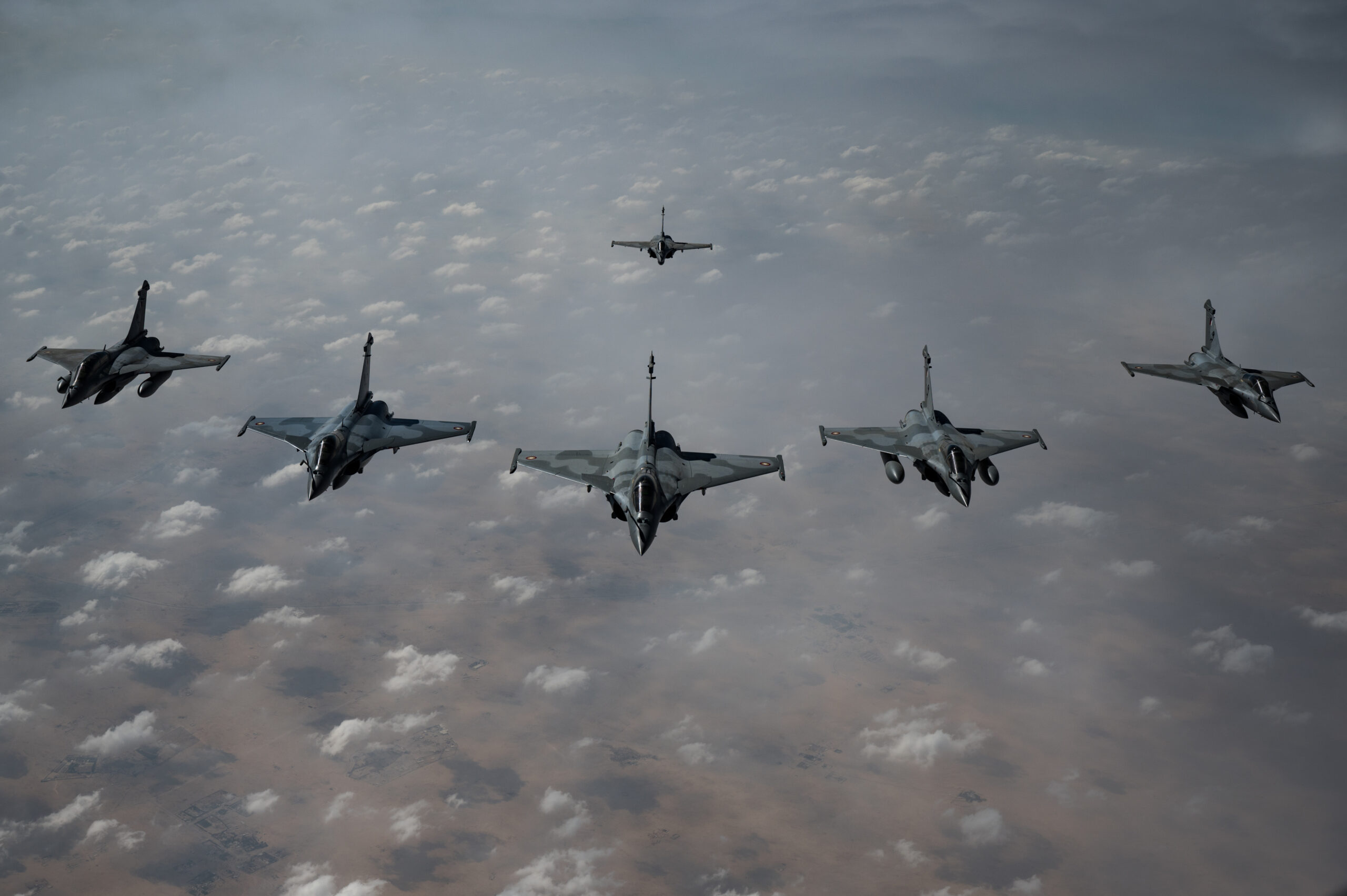
Credit: USAF
The QEAF Rafales are equipped with a range of French- and European-made weapons, including the MBDA AM39 Exocet Block II anti-ship missile, MBDA SCALP EG cruise missile, Safran AASM medium‐range air‐to‐ground missiles, MBDA MICA IR air-to-air missile, and MBDA Meteor beyond-visual-range air-to-air missile. In June 2018 it was announced that Qatar had selected the Lockheed Martin AN/AAQ-33 Sniper advanced targeting pod (ATP) to equip its fleet of Rafales.
In another deal signed in December 2017 the QEAF purchased 36 Boeing F-15QA fighters from the United States (although the US Department of Defense (DoD) has repeatedly referred to a purchase of 48 aircraft and the US State Department has cleared Qatar to buy 72 aircraft), with the first five F-15QAs departing for the QEAF’s Al Udeid Air Base on 27 October 2021. Deliveries of these aircraft were completed in July 2023, according to Boeing.
Boeing has received a contract to integrate the AGM-84L Harpoon Block 2 anti-ship missile with the Qatari F-15s and Doha has also ordered the Raytheon AGM-154 Joint Standoff Weapon (JSOW): a long-range glide bomb that can be retargeted after launch and has a warhead that can penetrate hardened fortifications, offering a stand-off strike capability that will be combined with the DB-110 tactical reconnaissance pod.
Also in December 2017 Qatar signed an agreement with the UK for 24 Eurofighter Typhoons in conjunction with a weapon package including MBDA Meteor beyond-visual-range air-to-air missiles, Brimstone air-to-surface missiles, and Paveway IV laser-guided bombs. The first of these Typhoons reached Qatar in September 2022, while a BAE Systems spokesperson told ESD on 9 February, “Aircraft 17 and 18 were delivered to Dukhan Air Base at the end of last year.” The last of the 24 aircraft ordered are due to be delivered by mid-2024.

Credit: Boeing
Qatar and Kuwait are the first nations to operate Typhoons featuring the ECRS Mk 0 radar, which is a narrow-band AESA system primarily designed to detect airborne targets.
As part of the Qatari Typhoon deal the UK RAF and the QEAF set up a joint Typhoon unit, 12 Squadron, which was reformed as a joint RAF/QEAF unit on 24 July 2018. Although ostensibly based at RAF Coningsby, where joint operations began in 2020, 12 Squadron deployed to Qatar in September/October 2022 for air security operations during the World Cup and returned to the UK at the end of February 2023.
Once these acquisitions are complete (and assuming the Alpha Jets and Mirages remain in service for now) the QEAF will thus field a formidable fleet of 114 combat aircraft – and possibly even more if there is a follow-on purchase of F-15QAs or indeed any other type.
Although Qatar formally submitted a request to the United States to acquire the Lockheed Martin F-35 Joint Strike Fighter, both Israeli and Saudi pressure is likely to prevent any such procurement, so for now the QEAF’s desire to operate a fifth-generation fighter is likely to remain unanswered.
Kuwait
The Kuwait Air Force (KAF) has some 2,500 officers and enlisted personnel and operates about 100 aircraft. In terms of its fast jet fleet the KAF still operates around 32 Boeing F/A-18C/D Hornets of 32 F/A-18Cs and eight F/A-18Ds a delivered in 1992-93.
However, in September 2015 it was announced that Kuwait had ordered 22 single-seat and six twin-seat Tranche 3 Typhoons in an order that is being fulfilled out of Eurofighter’s facilities in Caselle, Italy. Delivery of these aircraft began in December 2021, with Eurofighter confirming on 9 February this year that 15 out of the 28 aircraft on order have so far been delivered. As previously mentioned, the KAF, along with the QEAF, is a first user of the ECRS Mk 0 AESA radar on its Typhoons.

Credit: USAF
In June 2018, meanwhile, Kuwait ordered 22 single-seat F/A-18E and six twin-seat F/A-18F Block III Super Hornets, deliveries of which were completed, initially to the US Navy, in September 2021, although the Covid-19 pandemic ultimately delayed their delivery on to Kuwait.
The Block III Super Hornets will include upgrades to the Raytheon AN/APG-79 AESA radar, an IRST sensor, ‘shoulder’-mounted conformal fuel tanks and new enhanced F414-GE-400 powerplants.
The KAF’s fleet of classic Hornets will thus ultimately be replaced by a two-type frontline fast-jet force consisting of Block III Super Hornets and Tranche 3 Typhoons.
Oman
The Royal Air Force of Oman (RAFO) is a capable and professional air force that has traditionally procured Western aircraft types.
Having initially been formed as the Sultan of Oman’s Air Force (SOAF) with UK assistance in 1959 and initially staffed with British air and ground crew, the force was organised with a similar structure to the UK’s RAF. In 1990 the SOAF was renamed the Royal Air Force of Oman.
Today the force has a strength of around 4,100 personnel and operates around 130 aircraft of all types across 12 squadrons. The primary combat aircraft of the RAFO include nine single-seat and three two-seat Tranche 3 Eurofighter Typhoons, delivered between 2017 and 2018, and 23 Lockheed Martin F-16C/D Block 50/52+ fighters delivered from 2006 (17 of the 18 single-seat F-16Cs originally ordered and six two-seat F-16Ds).
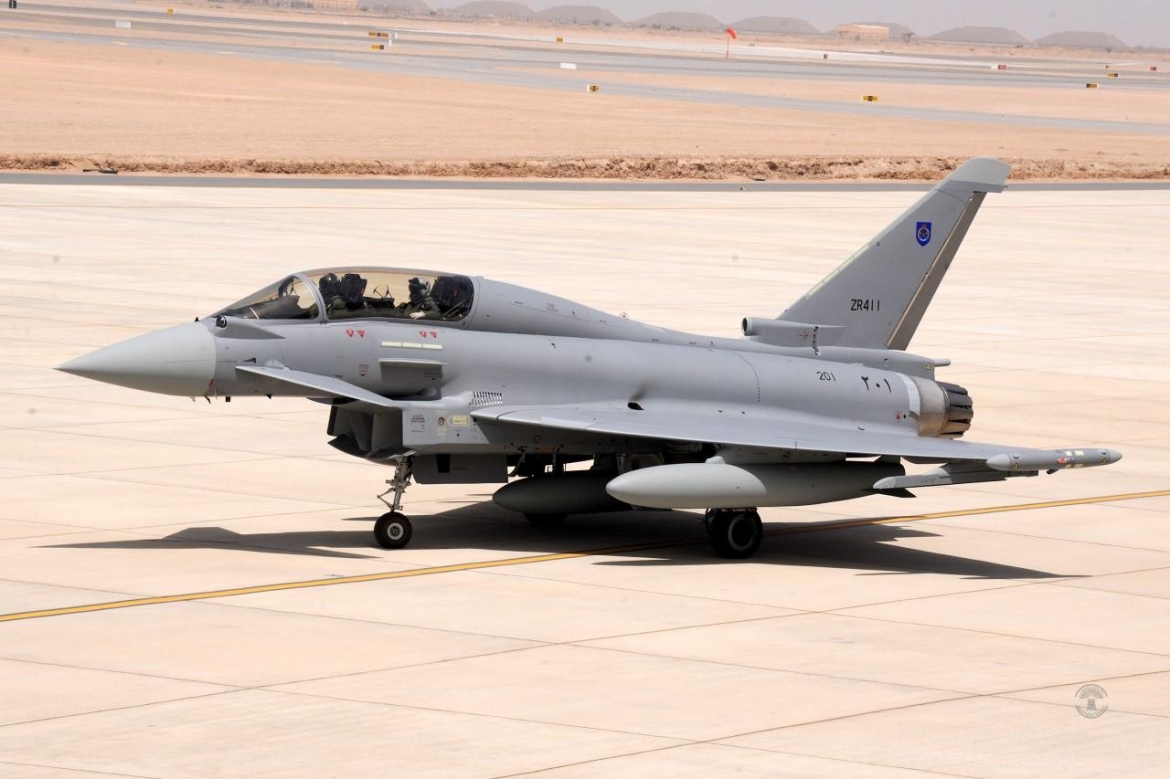
Credit: Eurofighter
To ensure that its F-16C/D fleet remains a viable force, Oman has requested a number of upgrades for the aircraft and in January 2018 the US Defense Security Cooperation Agency announced that the US State Department had approved a USD 62 million Foreign Military Sale of electronic warfare and communications equipment for the aircraft. This package includes Mode 5 identification friend or foe (IFF) and secure communications equipment, as well as an incremental operational flight profile (OFP) and joint mission planning software upgrade. The new IFF equipment will help Omani F-16 pilots achieve better interoperability with US and other allied platforms.
Bahrain
Although limited in terms of personnel and aircraft, the Royal Bahraini Air Force (RBAF) is deemed to be a well-trained, capable force that has shown itself to be prepared to engage in regional security operations. It also benefits from Bahrain having signed a defence co-operation agreement with the United States in 1991 as a ‘non-NATO ally’, meaning that, in return for US basing rights, the RBAF has access to training support under the US International Military Education and Training programme as well as funding via the US Foreign Military Financing programme.
The RBAF has a combat fleet consisting of 17 Lockheed Martin F-16Cs delivered from 1990 and eight F-5Es delivered from 1985. Four F-16D and four F-5F conversion trainers were delivered at the same time as the respective single-seaters. A contract for 17 F-16 Block 70s was signed in June 2018, with deliveries originally set to run until September 2023, but the Covid-19 pandemic ultimately knocked this schedule off course. The first Bahraini F-16 Block 70 was officially handed over at Lockheed Martin’s site in Greenville, South Carolina, on 10 March 2023, while delivery of this F-16 Block 70 fleet to Bahrain will be completed this year. Once the F-16 Block 70s are received, the RBAF will retire its F-5s.

Credit: USAF
The F-16 Block 70 (as well as the F-16V upgrade) features the fifth-generation capabilities of the Northrop Grumman APG-83 AESA radar as well as a new high-resolution Centre Pedestal Display (CPD), which provides critical tactical imagery to pilots and allows them to take full advantage of the AESA radar and targeting pod data. The Block 70 F-16 also features Lockheed Martin’s Automatic Ground Collision Avoidance System (Auto GCAS), among other enhancements.
A Lockheed Martin spokesperson told ESD on 7 February that two RBAF Block 70 F-16s are currently at Edwards Air Force Base, California, for testing with the US Air Force’s 416th Flight Test Squadron prior to delivery on to Bahrain. The first of these arrived on 28 March 2023. The RBAF has also committed to upgrading its existing F-16C/Ds to the F-16V standard, having received approval from the US State Department to do so.
Future sales
The most likely prospect for more fighter sales into the Gulf region rests with the Saudi Future Fighter requirement, with Eurofighter now apparently in pole position given that the German veto on Typhoon sales to the Kingdom has been relaxed. Beyond replacing its Tornados, the RSAF may well also want to replace its F-15C/Ds, with Typhoons being a possible candidate for both of these requirements. An initial purchase of Typhoons equipped with the ECRS Mk 0 radar could possibly be followed up with a later purchase of Typhoons sporting the ECRS Mk 2 when that becomes available.
While Dassault will no doubt continue its regional campaign with the Rafale F4, Dassault sources have admitted that, with regard to Saudi Arabia, they had suspected that Saudi interest in the Rafale may well have been at least partially designed to put pressure on Eurofighter. Dassault might thus find more traction in Qatar with the Rafale F4.
Lockheed Martin, meanwhile, could still secure sales of F-16 Block 70s/F-16V upgrades, most obviously to Bahrain, since the Emirati F-16E/Fs already possess an AESA radar.
Sales of any fifth-generation fighters into the Gulf region, most obviously the F-35, appear unlikely in the near term, but one new aircraft type that does have potential prospects is the Boeing F-15EX Eagle II. While there is anecdotal evidence that the Saudi and Qatari air forces have not been overly impressed with the performance of their current-generation F-15s when fully loaded, Boeing is placing its faith in the F-15EX for future sales into the Gulf region and elsewhere.
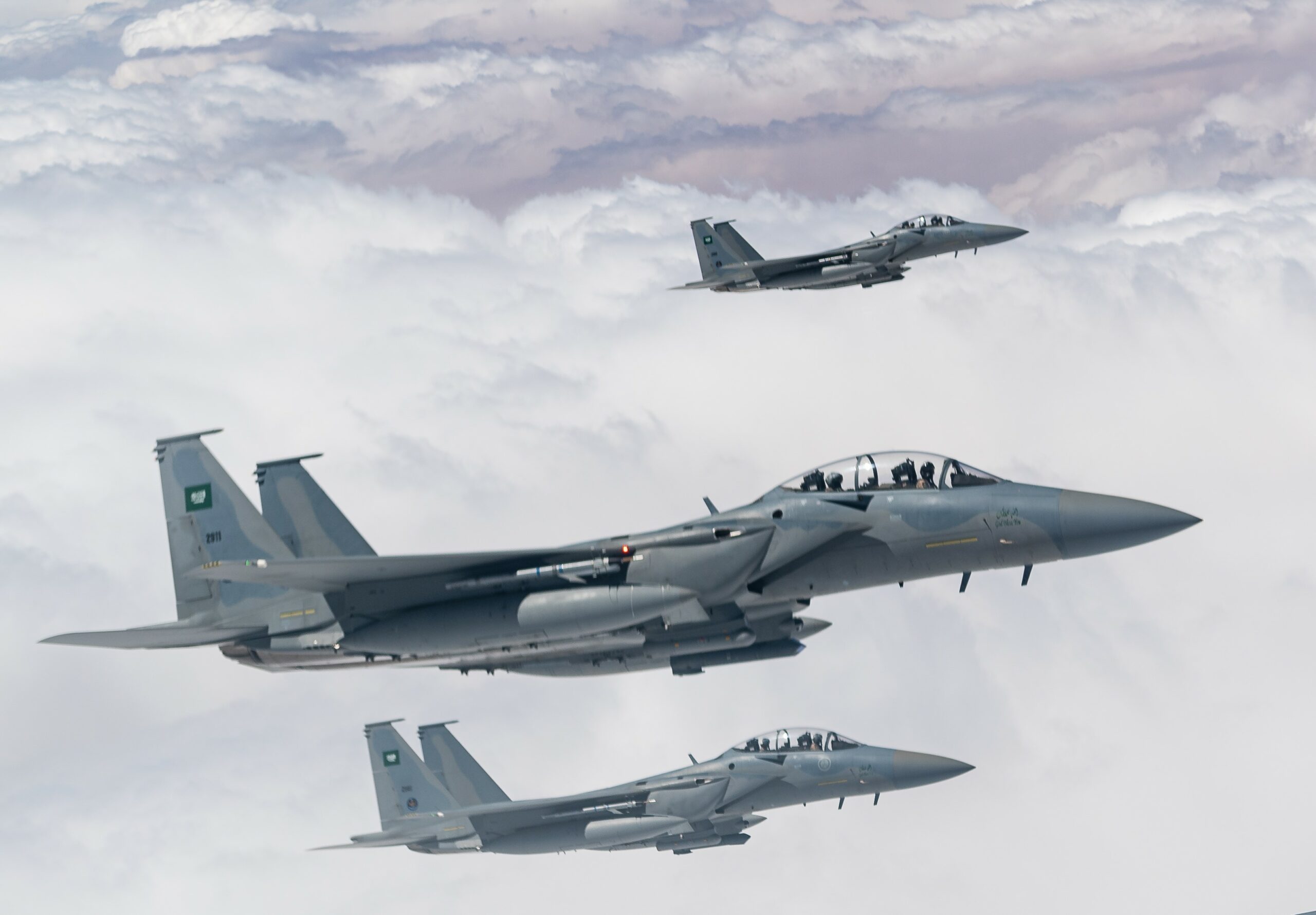
Credit: USAF
A Boeing spokesperson told ESD on 9 February 2024, “The F-15EX is gaining interest from multiple international customers, both existing users and potentially new users, as militaries look to modernise and upgrade their fleets and enhance force structures. Potential customers around the world will benefit from the US Air Force’s investments in the F-15EX and the next-generation capability it brings to the warfighter.”
The F-15EX was developed to recapitalise the US Air Force’s F-15C/D fleet due to inadequate numbers of fifth-generation F-22s in the US inventory, with the first aircraft expected to enter operational US service in July 2024.
As well as a pair of uprated F110-GE-129 engines, which each deliver 131 kN with afterburner (compared to 105.7 kN with afterburner for the F-15E), the F-15EX features a Raytheon AN/APG-82(V)1 AESA radar, a digital electronic warfare system in the form of the AN/ALQ-250 Eagle Passive Active Warning Survivability System (EPAWSS), the Legion IRST pod to better detect low-observable threats, and has a 13,300 kg payload capacity, which Boeing says gives it “the unique capability of holding 12 Advanced Medium-Range Air-to-Air Missiles or other large ordnance”.
The aircraft also has a LAD and can employ the Joint Helmet Mounted Cueing System to cue weapons at high off-boresight angles and also features an open systems architecture to facilitate potential future avionics upgrades.
The Boeing spokesperson said of the company’s opportunities for future sales to the RSAF, “The F-15EX would add critical capability for the RSAF as the country seeks to accelerate its armed forces modernisation.”
Over the last few years there have been overtures into the Gulf from fighter manufacturers beyond the West: the Chinese/Pakistani JF-17 Thunder has been pushed in the region, Korea Aerospace Industries is marketing its KF-21 Boramae and Turkish Aerospace is developing its Kaan National Combat Aircraft, which performed its maiden flight on 21 February 2024.
It seems most likely, however, that the Gulf’s air forces will stick with their traditional Western fighter suppliers, at least for the next several years.
Peter Felstead






